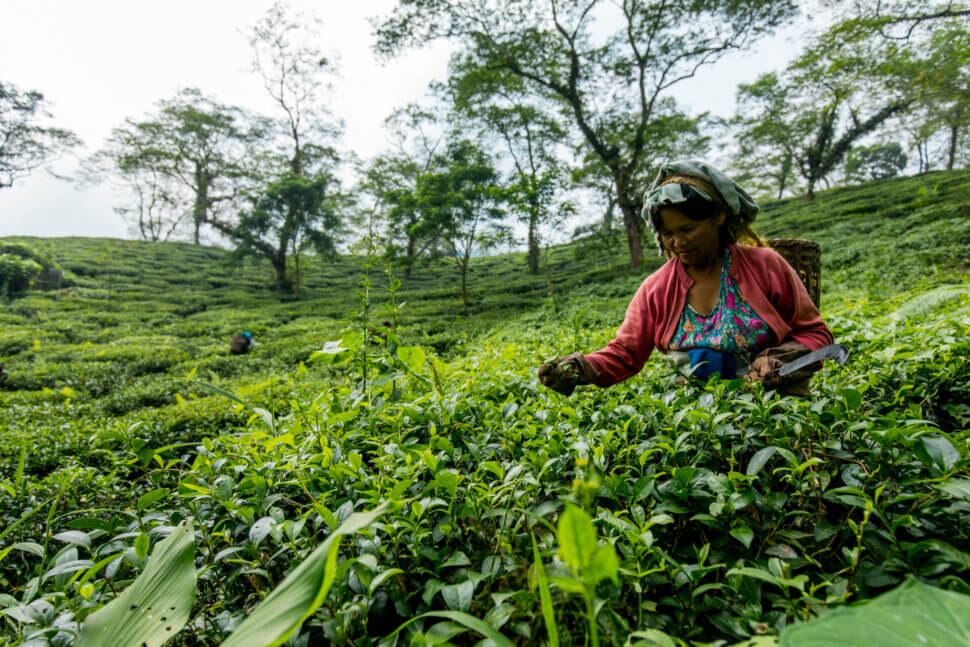Guide to Tea
May 11, 2020
After water, tea is the most widely consumed drink in the world. The act of drinking tea – both for medicinal purposes and for pleasure – originated in China thousands of years ago. Years of extensive research into each aspect of production meant that the Chinese gained a profound and superior knowledge of tea cultivation.
There are more than 3,000 different types of tea in existence, each with their own unique taste, aroma and appearance. Similarly to wine, teas are classified depending on a number of different environmental factors, such as the soil, climate, harvesting processes and blending.
All tea comes from the Camellia sinensis plant. They can be grouped into six different categories: white, green, blue (or oolong), dark, black and flower. It is the length of time the tea has been oxidised (or fermented) that determines the categories; the less a tea is oxidised, the lighter it will be.

WHITE TEAS
White teas are the mildest variety. The leaves have a whitish appearance in colour, and when brewed the tea is paler. These teas are only slightly fermented, and as such they have a weak aroma and low caffeine content; they will leave a bittersweet perfumed aftertaste that the Chinese refer to as “fragrance preserved within your teeth”.
White tea is commonly believed to be the healthiest of all the types of tea because it contains the highest levels of antioxidants and theanine. The antioxidants are believed to help combat the signs of aging and prevent disease, while the theanine promotes relaxation, reduces anxiety and boosts the immune system.
GREEN TEAS
Green teas are so called because they are green in colour. Like fine wines, each green tea differs in taste and smell due to growing conditions.
Green tea leaves undergo minimal oxidisation during the processing stage, meaning that many of the healing polyphenols are retained. They have become hugely popular in the Western world due to their natural weight loss properties and health benefits. Recent studies have suggested that green tea also reduces cholesterol, combats cardiovascular disease, prevents some cancers and helps slow down the onset of Alzheimer’s.
The most popular green tea at Yauatcha is the Dragon Well tea, a pan-roasted green tea fromTaiwan.
BLUE (OOLONG) TEAS
Blue (or oolong) teas are semi-oxidised, the leaves tossed in bamboo baskets to lightly bruise their edges and release enzymes that react with oxygen. The cultivation of these teas is restricted to Southeast China and Taiwan.
As with the other teas, there are multiple health benefits to gain from drinking blue tea. It is said to lower cholesterol, boost metabolism and aid weight loss.
The most popular blue tea at Yauatcha is the Oriental Beauty, a fruity and sweet-tasting tea.
DARK TEAS
Dark teas, also known as fermented teas, are a class of tea that has undergone microbial fermentation. This process affects the smell and the taste – typically mellowing it – of previously bitter teas, turning them thick, unctuous and pleasant.
The most popular dark tea at Yauatcha is the Puer Ya Jin.
BLACK (OR RED) TEAS
Black teas are the most widely recognised teas in the West, with tea blends such as English Breakfast and Earl Grey both falling into this category. The leaves are fully oxidised and the taste can be extremely bitter, hence why most people add milk (and occasionally sugar) or citrus.
The most popular black tea at Yauatcha is the Tian Hong, a wonderfully smooth black tea.
FLOWER TEAS
Flower teas are teas scented with the fragrance of flowers, such as jasmine or chrysanthemum. The leaves are either scented or smoked up to four times.
The most popular flower tea at Yauatcha is the Orchid Bao Zhong Cha.

